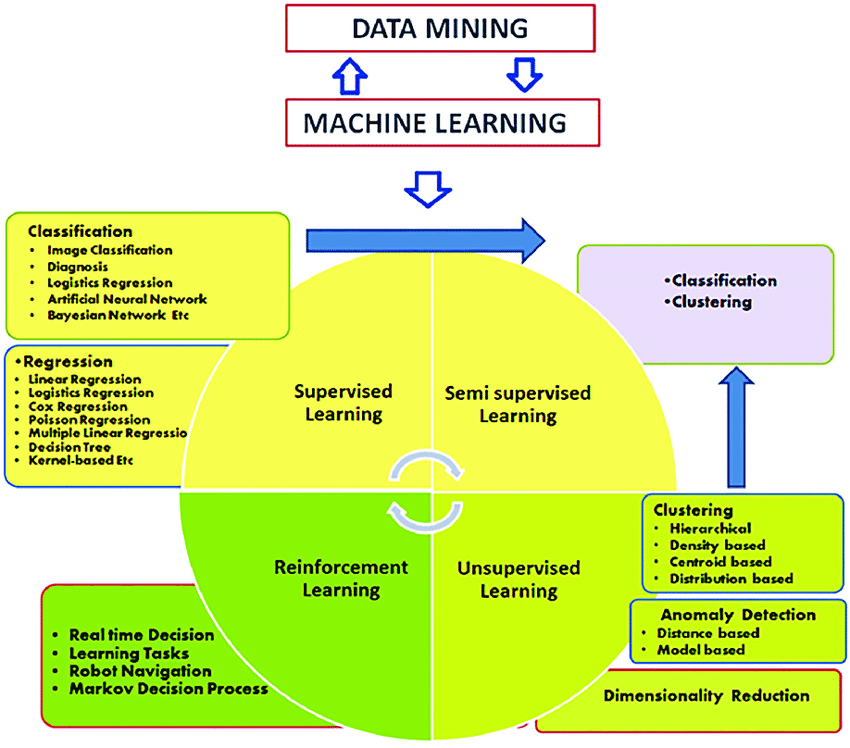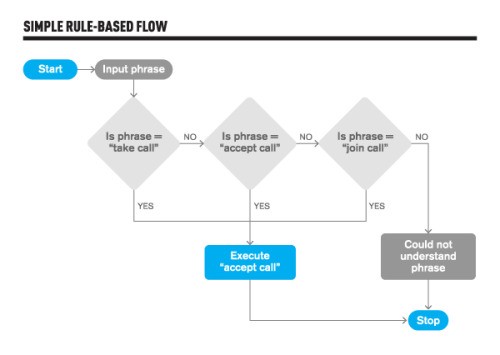AI Explained: Rule-based AI Vs Machine Learning for Enterprises
Sanam Malhotra | 18th June 2020

Similar to a classroom consisting of students with different learning patterns, artificial intelligence (AI) envelops unique learning abilities. While the rule-based approach entails predetermined AI, machine learning solutions are composed of large training datasets fueling cognitive learning. Indeed, it is essential for businesses to invest in the right AI technique to generate optimum value efficiently. This article serves as a comprehensive guide for enterprises to debate rule-based AI vs machine learning for initiating coherent automation.
Rule-based AI Vs Machine Learning: Key Differentiators
Rule-based systems, as the name suggests, generate pre-defined outputs based on certain rules programmed by humans. Whereas, machine learning weaves its own rules based on the output and data used to train the models. Let’s break down the intricacies of the two techniques one by one-
1) Rule-based Systems Are Deterministic
Rules-based AI systems exhibit “fixed intelligence”, following a definite series of rules and instructions, rule-based AI systems produce pre-set outputs. Instructions are poured into rule-based systems in the form of four main components, namely-
a) Facts or knowledge base or combination of data, such as oil price is pegged at $80/barrel.
b) Set of rules, i.e. “IF A happens Then do B”
c) Inference Engine that infers information and acts according to the interactions between input and rule base, and
d) Working memory

In addition, rule-based systems require explanation facilities or experts to guide the flow of input and a user interface to communicate output.
However, one small error in a rule-based approach of say 100 sets of conditional rules demands manual efforts to recheck the entire series. For this reason, rule-based AI systems are often preferred for limited scale projects that entail limited efforts, cost, and updates.
2) Machine Learning Models are Probabilistic
In contrast to rule-based systems, machine learning simulates human intelligence to perform tasks without being explicitly programmed. This human intelligence is poured into machine learning models in the form of rich datasets that are manually labeled to train machines.
Rather than definite outputs, machine learning models constantly “adapt” and “evolve” its performance in accordance with the continuous streams of training data. Machine learning applications can, therefore, automatically learn from human experiences and improve performance based on the data fed.

In computer science, the branch of machine learning used to train models with certain data is called, “supervised learning”.
Under supervised learning, deep neural networks have a key role in classifying and processing visual data such as images and videos to extract insights including-
a) Facial recognition
b) Object detection
c) Caption generation, and more.
The hidden layers of DNNs are where the “black box” phenomenon of machine learning takes place. It is because unlike a rule-based approach, machine learning algorithms make it difficult for businesses to explain exactly how a certain output is generated. However, more often than not, the black-box nature of ML models is a boon for programmers to avoid complex rule arrangements.
Also read- Comprehensive Guide On Java Tools for AI and Machine Learning
Rule-based AI Vs Machine Learning: Choosing The Right Enterprise AI Strategy
In the run-up to automation, businesses often face critical challenges while matching their core objective with the right AI technique. The debate around rule-based AI Vs machine learning becomes perennial for businesses without expert guidance and support.
We, at Oodles AI, have gained experiential knowledge in evaluating the ideal AI and machine learning solution for diverse business needs. Our AI development conducts an in-depth analysis of the problem at hand to find efficient, accurate, and affordable AI solutions.
Below are some critical factors to be determined before investing in any of the two AI techniques-
1) Quantitative and Qualitative Data
As mentioned before, rule-based AI systems require less data as compared to machine learning models. Businesses should have a sound knowledge of the kind of data that their system would infer.
For example, rule-based systems can work with basic data such as city names to answer whether or not they have a Mexican restaurant. However, ML models may require complete demographic data about each city to provide multiple answers along with ratings, routes, menu, and more.
2) Project Scale
Rule-based systems are not scalable in nature. It implies that the same model answering city names with Mexican restaurants would become too complex to suggest other restaurants. Whereas, machine learning models can be easily scaled with “intents” and “dialogues” to train the model for answering a plethora of restaurant-related questions.
 An example of a simple rule-based chatbot flow.
An example of a simple rule-based chatbot flow.
As a well-positioned Chatbot Development Company, Oodles AI deploys both rule-based and machine learning approaches to build conversational chatbots.
3) Mutability
In functional programming, a ‘mutable object’ is an object whose state can be modified once created. However, ‘immutable objects’ such as rule-based AI systems, are rigid systems wherein changes in field and output are hard to implement. Mutable programming in machine learning models enables businesses to change the values or data by using mutable programming languages such as Java.
Also read- Significance and Deployment of Edge Machine Learning for Businesses
Deploying Business-critical AI and Machine Learning Applications With Oodles
The choice between rule-based AI Vs machine learning can be arguably debatable for organizations. While automation is becoming an essential business strategy to stay competitive, the AI techniques powering this automation is equally critical.
At Oodles, our years of experience in working with a global clientele has enabled us to gauge business requirements accurately. Our team has successfully deployed both rule-based and machine learning approaches to achieve optimum results for mission-critical projects, such as-
a) Risk assessment chatbot for COVID-19 remote diagnosis
c) Facial recognition for employee attendance, and
Team up with our AI experts to build value-generating automated systems with our AI and ML services.



